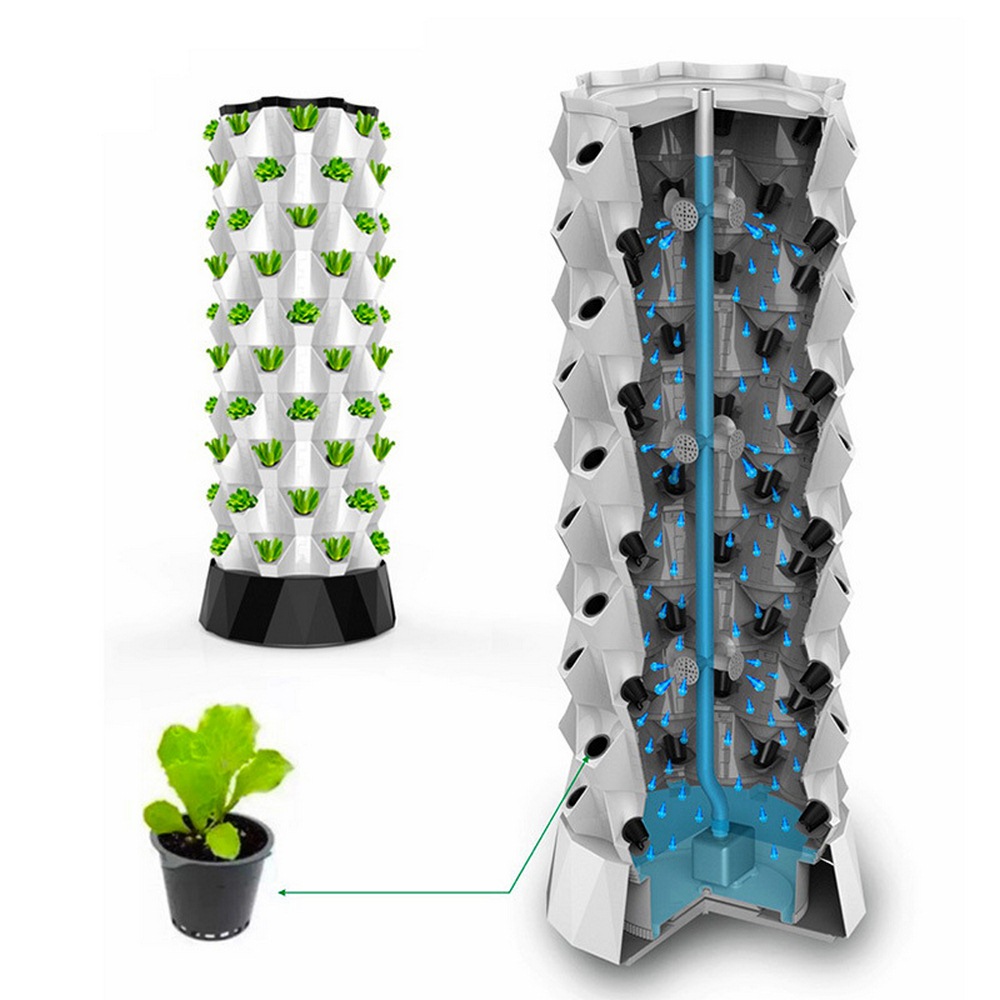I have gone back and forth on vertical farming. There are scams in the field, but there are also some merits (most of them apply to urban farming in general).
The main issue you have with vertical farming is that there is only so much stacking you can do before you get out of light. A pillar like in the illustration projects a shadow, in which you can't really put plants.
However right now sunlight is not the limiting factor for plants growth. IIRC depending on the plant it is either water or CO2 so you can do some amount of vertical farming. To me, the interest is not to come as a replacement for regular farming (so growing grains is not the issue, you will have a hard time beating the efficiency of a flat field + tractor), the interests are:
- freshness. Having herbs that you can cut as you need them is really a taste changer.
- air cleaning. Some plants do have the ability to fixate some VOCs.
- less transportation. Having the plants grown in the same building block means that the CO2 footprint will be much lower
- more efficient water usage. Careful with this one, in some places water will be more scarce in city than countryside, but water consumption of such systems is generally lower.
- less refrigeration. If the food has less transportation it also requires less refrigeration
- local fruits all year long. Assuming they are put in a controlled environment like a greenhouse, getting food that normally requires a lot of transportation locally becomes possible.
So to sum up, it is less of a solution to make regular agriculture sustainable and more to make sustainable agriculture more enjoyable. Actually one does not need tasty herbs and exotic fruits, but the ability t have them without poisoning the planet is nice and, well, solarpunk.
